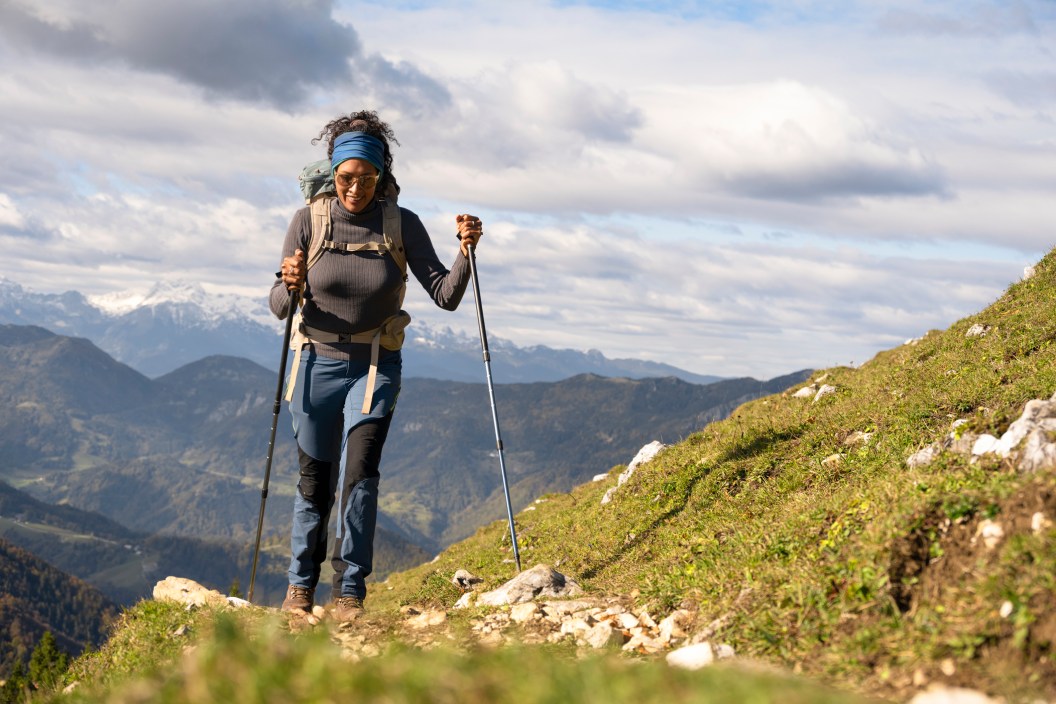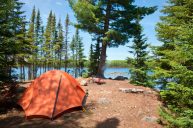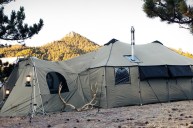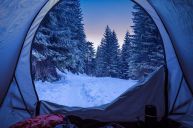The yearning to take off into the open wilderness and trekking into the mountains can be a hard one to resist—but for many, the thought of backpacking alone, especially for women, can be intimidating.
Many of us adventure seekers might have faced the dilemma of knowing a place we really want to explore but not having anyone available to come along, so we have to choose between going solo or staying home. This complication is compounded for a woman backpacking alone.
Are You Ready for Solo Backpacking?
While staying home is cozy and comfortable, foraying into the wild unknown is invigorating and refreshing. There's nothing quite like taking in a morning sunrise over the mountains with your own two eyes—and you most likely won't meet forest creatures such as salamanders and squirrels in your living room.
While the wilderness has a certain charm, there are inherent risks to consider. Being all alone in remote areas can be overwhelming—and, frankly, dangerous—for the ill-prepared. And, unfortunately, women in particular must be prepared to handle additional risks to their safety before embarking on solo adventures.
A solo backpacking trip is a huge endeavor, and it probably shouldn't be tackled until you've got some experience under your belt. It's probably not a great idea for a female's first solo backcountry camping trip to be her first backcountry camping trip ever. Take a few excursions with friends first. Gain some experience hiking with groups of women before trekking out entirely on your own. Enthusiasm and feminist energy go a long way, but knowledge is power. Being inexperienced and completely alone could be a recipe for disaster.
Our tips will help women prepare for that solo backcountry camping trip so they can go forth boldly and seek adventure!
1. Do Your Research
The Girl Scouts' mantra—be prepared—serves grown-up ladies, too. Solid preparation makes or breaks any backcountry trip.
Research the area before heading out. Download a trail hiking app, such as AllTrails, Cairn, or Gaia GPS, and learn how to use it. But don't only rely on your cellphone. Get a satellite communicator and familiarize yourself with how it functions. In an emergency in the middle of nowhere, you'll be happy you took the time to learn about this little gadget.
Ask yourself some important questions that will help you narrow down what to expect:
- What kind of animals will you potentially encounter? For example, if you'll be in bear country, bone up on what to do if you see a bear, and plan to pack bear spray and attach a bear bell to your pack.
- What type of terrain will you be camping on? This will determine what you'll need to pack for sleeping.
- What's the climate like during that season? This helps when deciding what clothes to pack. Knowing what to expect helps you to use the limited amount of space in your pack most efficiently. Hot tip: Even if the forecast calls for perfect weather, pack for rain. In many parts of the country, the weather can change in an instant. Not having proper gear for extreme weather can turn an uncomfortable situation into a dangerous one pretty quickly.
Also, be honest with yourself up front before you even step foot on mossy trail. What are your hiking abilities? Are you in the shape needed to conquer the route you plan to take? If not, plan for an alternate route.
2. Make a Period Plan
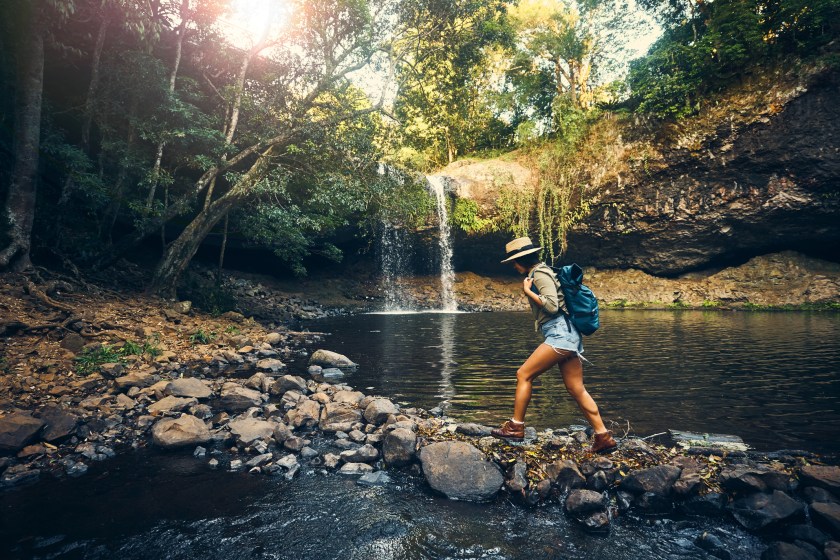
Getty Images, Pixdeluxe
While camping during a menstrual cycle may be uncomfortable, it's not more inherently dangerous than camping during any other time of the month. It was long rumored that bears are attracted to menstrual blood, but that myth has been debunked. A study published by the National Park Service in 2016 found no substantial evidence exists that bears are more attracted to menstrual blood any more than other scents.
That being said, camping during a period will create some extra work for you so you can Leave No Trace. Used sanitary products will need to be carried out with you. Bring along some heavy duty zip-seal bags, such as Ziploc, to transport waste. This could be a good time to use period underwear, such as Thinx, as it creates less waste and can be worn longer than tampons or sanitary pads can be used.
3. Let Someone Know Where You're Going
Always, always, always let someone know where you will be going and when you are expected to return. It could be a spouse, a trusted friend, or a family member. Just make sure it is someone reliable who will call for help if you don't arrive back home or check in with them in a timely manner. Give them specific details including trail name, trailhead location, and destination.
Also, know the area where you will be camping. Map out a general trip plan ahead of time. Know where cellphone service will be good and where it will be spotty. It would not hurt to invest in a GPS locater device to carry just in case.
On the same note, learn to read an old-fashioned paper map. It's not as easy as just pulling it out and following the dotted line—it's an entire skill set. There are symbols to learn, the ability to decipher your own location in relation to the sheet of paper in your hands, and directional cues to comprehend. Learn the skills and take along a map.
4. Trust Your Gut
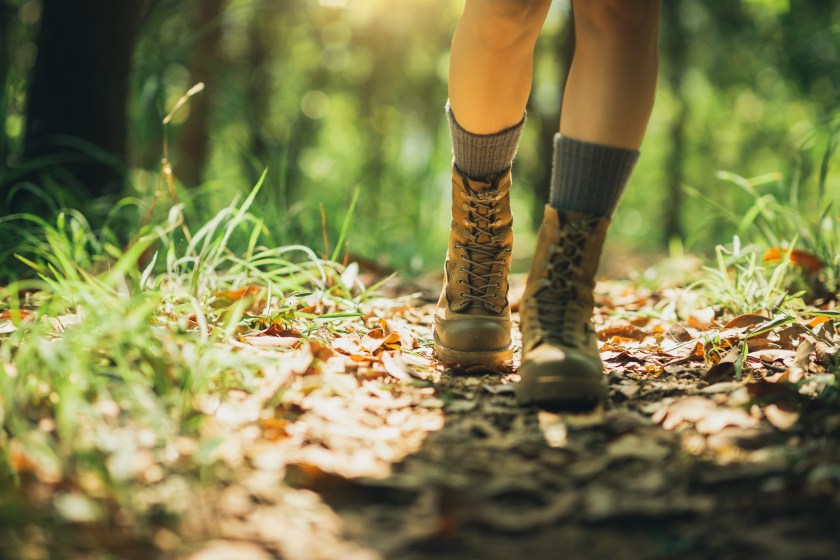
Getty Image, lzf
Human predators are everywhere, even in the backcountry. If an interaction with someone raises the hair on the back of your neck or creates a feeling in the pit of your stomach, listen to your instincts and move on. Safety is a top priority for a female alone in the wilderness (or anywhere).
If a stranger blatantly asks if you are alone, know how to respond; never tell someone you do not know and trust that you're in a vulnerable position, and don't mention being alone. Some responses could be that you are meeting a friend at a certain location, or you're accompanied by someone who's either just behind or just ahead, depending on orientation. Never reveal your plans or where you will be sleeping. Remember that bear spray you're carrying? It works on more than just bears.
Another tip: Bringing your dog along can be a great deterrent for both wildlife and strangers.
5. Take Lots of Photos
There is a lot to consider as a first-time solo backpacker, especially as a female. Taking lots of photos might seem like an afterthought—a way to fondly look back on this time of female empowerment against a scenic backdrop—but it's more than that. Photos can serve as visual reminders for wayfinding. For instance, taking a photo of a unique landmark or specific spot with a discernible feature on the trail can then be used as reference on the way back to confirm you're in the location you think you're in. Plus, memories!
